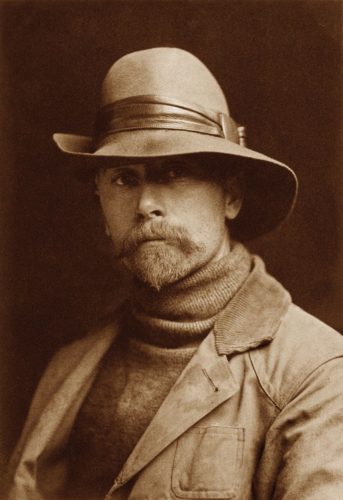There are many parallels in the lives of Vincent Van Gogh and Edward Sheriff Curtis.
- Both men died practically unknown and penniless, but their work was saved by family.
- Both displayed genius in their craft, pursued it with passion and continued against crushing psychological odds.
- Both had a view of the world far greater than was appreciated in their time, only to be widely recognized as significantly important artists, after they were gone.
As with many before, their genius was not understood in their time. Van Gogh painted the dynamics of physics in the energy of his brush strokes, and Curtis captured what others dismissed and denigrated when he recognized the import of documenting a “vanishing race”.
Not just an American history, but a contribution to world history, in understanding an indigent people.
 A collector of Edward S Curtis is a steward of great art.
A collector of Edward S Curtis is a steward of great art.
Recognize the command Curtis had over artistic elements brought to the work!
His intentional study of photography made him a cutting-edge and recognized pictorial documenter, with a developed eye for creating compositionally balanced photographs. Attention to lighting detail is expressed in his studio work with subjects engaged in such a way as to expose an interesting portrait.
In the larger scale of his new endeavor and environment he was able to translate an extension of the studio talent onto wide-open spaces with uncooperative aspects of nature. His intuition and psychological awareness to create connection with his Indian subjects, who selectively allowed him to capture cultural character, engaged them in the story to reveal their culture and proud heritage with visual interest.
A collector of Edward S Curtis is a steward of critically important history.
As for Edward S Curtis’ personal historical significance – Thirty years creating the largest ethnographic documentation in The North American Indian has historically and artistically invaluable importance.
From the inception of his work, his story captures excursions to Alaska, meetings with financial tycoons, royalty, early cinematic and audio dabbling, and the never-ending marketing genius to raise capital for a nineteenth century start-up. The value of knowing the right people shows up with the influence of a Famous American Explorer and an American President, both of whom recognized his talent for preserving natural beauty. Their admiration translated into encouragement of a young photographer; who would spend thirty years sacrificing family, fortune and comfort; for the recording of The North American Indian.
A visionary of marketing, Edward Curtis created a subscription method. Over the thirty years, Edward financed his work from 290 sets of 20 portfolios and accompanying written history volumes. Subscribers included King George V of England, Andrew Carnegie, J. P. Morgan, Princeton University. MIA – Add a few more recognizable people here.
An Opportunity to become a steward and collector of History and Art:
Valley Fine Art in Aspen, Colorado has an opportunity for you, as collector.
A recent acquisition includes 7 intact and in excellent condition Volumes of written and pictorial history. This unusual find contains the portraits, landscape and recorded cultural lifestyle of Northern Plains Indian tribes.
Upon its completion in 1930, the work, entitled “The North American Indian”, consisted of 20 volumes, containing 1172 hand-pressed photogravures and 4000 pages of written text. Each volume was accompanied by a corresponding portfolio containing at least 36 large photogravures in each portfolio, 722 in total.
Available:
Complete Volume VI – Piegan, Cheyenne, Arapaho
Paper type: Dutch Van Gelder
Year: 1908
Complete Volume VII – Yakima, Klickitat, Salishan tribe of the interior, Kutenai
Paper type: Dutch Van Gelder
Year: 1910
Complete Volume VIII – Nez Perce, Wallawalla, Umatilla, Cayuse, Chinookan tribes.
Paper type: Dutch Van Gelder
Year: 1910
Complete Volume X – The Kwakiutl
Paper type: Dutch Van Gelder
Date: 1914
Provenance: Subscription #456, Original Subscriber: Art Institute of Chicago
Complete Volume XI – Nootka and Haida
Paper type: Dutch Van Gelder
Date: 1915
Provenance: Subscription #57
Complete Volume XII – Hopi
Paper type: Dutch Van Gelder
Date: 1922
Complete Volume XVIII – Chipewyan, Cree and Sarsi
Paper type: Dutch Van Gelder
Provenance: Subscription #456: Art Institute of Chicago
